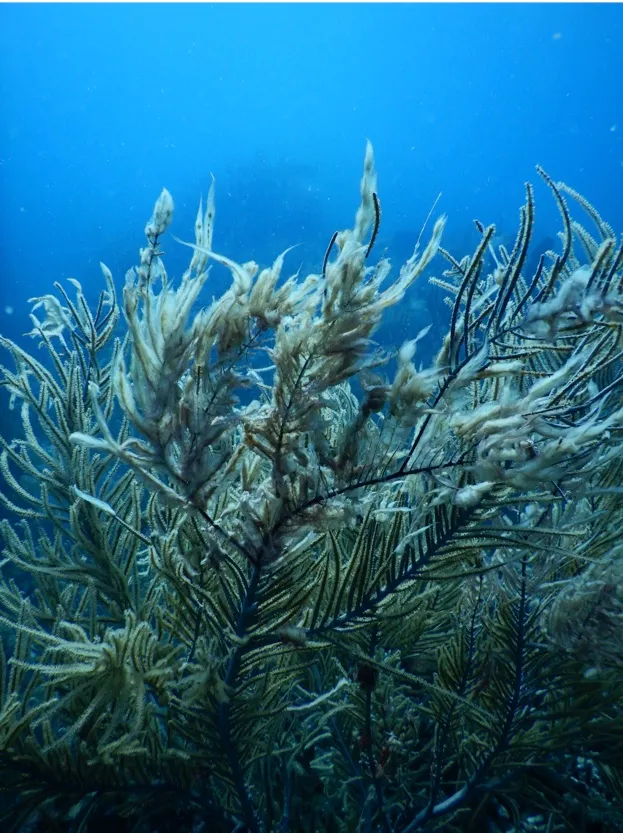Damaged gorgonian corals on a reef off the coast of St. John, U.S. Virgin Islands. The living tissue on many of the branches have been chipped or torn off, leaving only the dark non-living core of the branch © Howard Lasker
In 2017, hurricanes Maria and Irma caused widespread destruction on a number of Caribbean islands.
The coral reef ecosystems were also injured during the storms, providing a rare opportunity for scientists to study how they recover from damage.
“Hurricanes have tremendous destructive potential and can devastate a reefscape,” says Dr Howard Lasker from University at Buffalo. “We surveyed only a small fraction of the reefs on St. John [part of the U.S. Virgin Islands], but all were affected by the hurricanes.”

Before and after views of a coral reef off the coast of St. John, U.S. Virgin Islands. The reef, vibrant and full of life, is pictured in 2013 (left). The same reef is shown from a different view in 2017 (right), after hurricanes Maria and Irma tore through the region. The reef is now more sparsely populated, with many coral colonies either severely damaged or swept away. © Howard Lasker
The research team found that the destruction varied according to location, with deeper and more protected sites faring better than expected.
“In shallower waters the destruction was clear. Large stony corals were toppled; at some sites rocks had rolled across the reef like bowling balls; and sea fans, sea plumes and sponges were ripped from the ocean floor, with many washed up on beaches,” says Lasker.
The team will continue to monitor the reef system and how it recovers.
Since they first started observing the coral reefs in the late 1980s, they have seen a change in the type of species present, with a change from large stony corals to smaller, weedy species.

Damaged gorgonian corals on a reef on St. John, U.S. Virgin Islands. The wispy, white strands clinging to the edges of the coral are harmful cyanobacteria, which have grown on injured areas. © Howard Lasker
